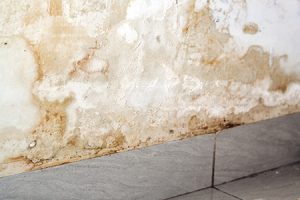Stopping Water Damage in the Bathroom
Stopping Water Damage in the Bathroom
Blog Article
They are making a few good points about How to Repair and Prevent Bathroom Water Damage overall in the content just below.

The restroom is incredibly prone for damp buildup and also possible water damages as a result of the frequent use of water in it. This article uses straightforward examination strategies to aid detecting water damages threats.
The constant use water in the washroom makes it exceptionally at risk for wet buildup and also possible water damages. By checking it frequently, you can decrease water related damages.
The following set of inspections is easy to perform and also need to be done as soon as in every 3 months in order to keep your bathroom healthy and also to avoid prospective water damages caused by the bathtub, the shower, pipeline joints as well as plumbing, sinks, cupboards, and the toilet
Do not forget executing these evaluations and also be complete while performing them. Remember that these basic evaluations can conserve you a great deal of money by giving early indications for water damages
Sinks and Cabinets
Sinks and also cupboards are revealed to moisture and also moisture daily and also are commonly overlooked. Evaluate on a regular basis under the sink as well as on the countertop over it. Repair any drip in the catch as it might recommend drain issues. Take a look around the sink, slow-moving draining pipes might suggest a blocked drainpipe. Replace sink seals if they are fractured or loose.
Bathtub as well as Shower
The shower and also bathtub call for special interest and maintenance. Examine the ceramic tiles and also replace if split. Make sure that there is no missing out on cement between the ceramic tiles. Check and change broken caulking at joints where the wall surfaces meet the flooring or the bathtub. Obstructed drains as well as pipes issues will certainly avoid the bathtub from drying and also may show major troubles beneath the tub. Consult with an expert quickly to prevent architectural damage. Take note of stainings or soft locations around the bathtub walls as they might show an internal leak.
Plumbing
Signs for water damage are tough to detect because a lot of pipelines are installed inside the walls.
Pay special attention to flooring and also walls moisture as well as discolorations as they may suggest an unseen plumbing problem. Inspect dampness degrees in adjoining spaces too.
The Commode
The toilet is a prone water joint. Examine the water lines and search for leakages around the commode seat, in the hose, as well as under the water storage tank. If you identify any signs of wetness on the flooring around the commode, look for leaks in the toilet rim as well as storage tank seals.
Realize that hanging commode bowl deodorants boosts the opportunities for clogs.
Water Damage Signs In The Bathroom To Avoid Cleanup
Musty smell
This is one of the easiest signs to catch because musty smells are so odorous. The damp, earthy, moldy smell should be a big red flag. The smell will develop when moisture gets trapped in surfaces, and begins to facilitate mold growth. Leaking pipes under cabinets, inside walls, and behind shower fixtures will cause moisture to stay trapped and not dry, which will lead to mold growth and spread. As soon as you notice any musty smells in your bathroom, have it checked for hidden water damage and cleanup signs.
Visible mold
If the smell isn’t there to give it away, sometimes you will actually see mold growth. Finding mold in your bathroom is a serious problem, because mold is very harmful to your health. By the time mold growth is visible, it also means that water damage has already occurred and been present for some time. The only way the mold problem can be resolved is to find the source of the moisture and get it stopped. To safely and adequately remove mold, you need to have professionals handle the remediation. Do not waste any time in getting mold problems addressed, fixed, and sanitized so that you can protect you and your family from the many respiratory symptoms caused by mold exposure.
Damaged floors
Bathroom floors should be able to withstand some exposure to water while still remaining in good condition. However, when excess exposure or water leaks occur, they will begin to damage even the most water-resistant flooring. If you notice any cracking, bubbling, staining, or warping on your bathroom floors, there is probably a water leak somewhere causing the distortion. If you notice areas of the floor have become softer, or even have a spongy feeling, there is probably damage to the subfloor. Subflooring is typically made up of plywood. When plywood is exposed to water or moisture, it will absorb it. Once it has become saturated, the weight of the excess water will cause the wood to swell and soften. Check the floors in your bathroom frequently to catch any of these sings before they lead to damaged subflooring.
Changes on walls
When water leaks behind walls, it will cause changes in the drywall. Peeling plaster, blistering paint, and soggy wallpaper are all good indicators that excess water is building up behind the wall. Water leaking behind drywall will cause it to swell and be soft to the tough. If you start to notice gaps along the trim of your walls, or where tile meets the wall, it could also be a strong indicator that there is a leak behind the wall. Any changes, distortion, or damage on the walls should be evaluated as soon as you notice it to prevent further water damage and cleanup.

As a serious reader about Common Causes of Water Damage in a Bathroom, I figured sharing that excerpt was smart. In case you enjoyed our post plz be sure to share it. Thanks for taking the time to read it.
Visit My Site Report this page